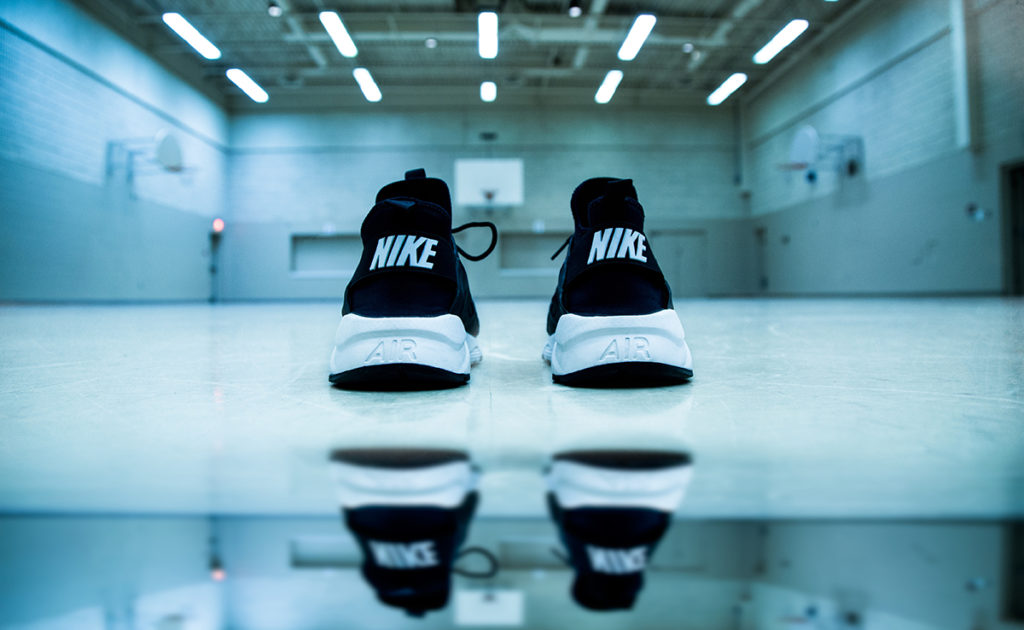Brand ambassador Instagram – or influencer – content is getting more and more common. If you post content on behalf of brands in exchange for products, services, or cold hard cash you may feel invincible. And as influencer marketing grows in popularity, you may be getting more offers to work with brands than ever before.
That’s why we’ve put together top pitfalls to avoid that will help keep you focused on what matters: Working with brands and growing your business. Read on for the tips, and be sure to check out PodSquad’s services to help you grow a real and engaged following starting at $25.
TLDR: Top Brand Ambassador Instagram Mistakes to Avoid
- Recycling or faking brand ambassador Instagram content
- Working with brands, the deleting posts later
- Faking likes, comments, and shares
- Not showing up to brand ambassador Instagram calls and meetings
- Chatting with clients about your busy and glamorous lifestyle
- Asking for free product and not responding once you get it
- Demanding too much cash for influencer marketing
- Getting lazy with compliance
1. Recycling or faking brand ambassador Instagram content
 It can be tempting to use older content with brands that currently work with you to save time. Maybe you shot a picture or video that fits a general description in the past and have an opportunity to use it with a brand for full price. “A lot of influencers underestimate how seriously brand marketers evaluate each post.” Notes Emily Espinosa, Head of Community at PodSquad, an agency that pairs prospective influencers with private pods for follower growth. “Getting that perfect shot that matches a campaign and really shows you care is an important brand ambassador Instagram tip. And trust me, marketers at brands and their bosses will pay attention to the effort and reward influencers that deliver consistent excellence.”
It can be tempting to use older content with brands that currently work with you to save time. Maybe you shot a picture or video that fits a general description in the past and have an opportunity to use it with a brand for full price. “A lot of influencers underestimate how seriously brand marketers evaluate each post.” Notes Emily Espinosa, Head of Community at PodSquad, an agency that pairs prospective influencers with private pods for follower growth. “Getting that perfect shot that matches a campaign and really shows you care is an important brand ambassador Instagram tip. And trust me, marketers at brands and their bosses will pay attention to the effort and reward influencers that deliver consistent excellence.”
Lately, Instagram influencers have also come under fire for faking their content, posting images that are not theirs or Photoshopping themselves into places they never went. “That’s just deceptive and frankly, it makes those influencers liars in the eyes of brands and the public. We take note of those incidents, and we also use technology that looks for manipulation of images when we first start working with new brand ambassadors. It’s a lot easier than most people think to detect in an automated way.” Espinosa notes.
2. Working with brands, then deleting posts later
Receiving a ton of likes and comments from posting great brand content you worked hard on is a satisfying reward. But what do you do when your brand ambassador Instagram posts don’t get many likes? Some influencers will simply delete those posts after some time has passed. The hope is that the brand isn’t paying attention any longer and no one will notice the missing post. It may have the added benefit of creating the perception that your posts generally do better than other brand ambassador Instagram content. While it seems like a good idea, it may actually reduce the number of opportunities you have to work with brands.
Let me explain: Many brands will save links to your old posts. They then refer back to those posts when pitching new projects or selling internally as proof of their great partnerships with you. Brands are also searching to find Instagram influencers 24/7. That means more potential clients are being exposed directly to your post in the wild. It carries more weight when the client can review the content live and helps them sell you in as the answer to their marketing prayers. If the post is missing or the link doesn’t work you’ll miss out on all those opportunities for positive word of mouth.
3. Faking likes, comments, and shares
You don’t want to be fake, yet gaining a following is super hard with Instagram’s latest algorithm updates. Pods are one of the latest secret that has been revealed about how the biggest Instagram users got big. A pod is a group of friends (or just social media acquaintances) that all agree to like and comment on each others’ posts when they hit the feed. That’s a totally legit way to work the system in Instagram’s eyes.
The old way to deal with growing a following quickly was by using liking, commenting, and following apps to spread your account to as many places as possible. PodSquad offers a new solution that helps Instagrammers gain immediate following from people that actually want to discover and support new accounts via private pods. Check out their offering here.
“Liking apps are a form of fakery, plain and simple.” Espinosa notes. “They are just another way unethical Instagram users are scamming brands out of real dollars. Unfortunately for honest influencers, it means they are also now under increased scrutiny and price pressure. There are tools that reveal the telltale pattern when software is used, which is why we came up with the idea for promoting accounts via Private Pods. It’s real, genuine, and Instagram and brands love it.”
4. Not showing up to brand ambassador Instagram calls and meetings on time (or at all)
 Brand ambassador Instagram mistakes don’t always start with something you do. Sometimes it’s failing to do show up to a meeting, dial into a call, or keep a deadline that can earn you a bad rap amongst brands. While it may be true that you are stretched thin between travel, shoot sessions, and juggling multiple clients, it’s also true that as an influencer you are also a business. Professionals always take the time to schedule their lives well so they can be on time, or at the very least warn when things go awry.
Brand ambassador Instagram mistakes don’t always start with something you do. Sometimes it’s failing to do show up to a meeting, dial into a call, or keep a deadline that can earn you a bad rap amongst brands. While it may be true that you are stretched thin between travel, shoot sessions, and juggling multiple clients, it’s also true that as an influencer you are also a business. Professionals always take the time to schedule their lives well so they can be on time, or at the very least warn when things go awry.
Sometimes it’s the simple things that matter the most, and result in getting you more work at a better rate of pay.
5. Chatting with clients about your busy and glamorous lifestyle
Marketers at brands have never been busier. Most companies large and small face reduced staff, increasingly complex responsibilities in a quickly evolving digital world, and limited budget to make it all work. That also means modern marketers tend to be in the very unglamorous position of working longer, harder hours with less time for fun. And while Instagram influencers work hard as well, it’s a different kind of work that is often viewed by marketers as “fun”. While that may be fiction in many aspects, the perception can be a real deal killer.
That means hard working, true to grit marketers may find it offensive if you are constantly reminding them of how busy you are working with other brands, in other locations, or on other assignments. Their job is to focus on what you can do for them, not where your jetset lifestyle will take you next. One way to refocus your extrovert energy is this regard that will actually help your business is to talk about what is working well for other brands. Share the work you did or are about to do, and the thinking behind why. This could actually reverse the flow and position you as a highly valuable resource to stay ahead of the competition.
6. Asking for free product and not responding once you get it
 There’s never been a better time to be an influencer. Brands are showering influencers in every vertical with free products and services in the hopes they will earn an Instagram post or story. But once you get used to the euphoria of free stuff, you may find yourself asking brands that reach out to send product for evaluation. This is where a key brand ambassador Instagram misstep can occur. If you don’t love the product you don’t have to cover it. But you should always let the brand know why. If a brand sends something and gets no response
There’s never been a better time to be an influencer. Brands are showering influencers in every vertical with free products and services in the hopes they will earn an Instagram post or story. But once you get used to the euphoria of free stuff, you may find yourself asking brands that reach out to send product for evaluation. This is where a key brand ambassador Instagram misstep can occur. If you don’t love the product you don’t have to cover it. But you should always let the brand know why. If a brand sends something and gets no response
Want to know how to become a fashion brand ambassador? Check out our feature from an established expert.
7. Demanding too much cash for influencer marketing
While the market for brand ambassador Instagram posts is still growing, there are a few key factors driving down the price per post:
- Smarter tools are detecting where your followers come from, making it harder to charge for the full value of followers that may not be in a brand’s target audience
- More influencers on Instagram! It’s still a growing social media platform, and more and more content creators are discovering how to become a paid influencer
- Brand budgets for influencer marketing were out of control in 2017, but that’s all changing. Many brands are pulling back on influencer marketing budgets to put money into other, more directly trackable technologies
- New ad units like Facebook branded posts are allowing companies to simulate brand ambassador Instagram marketing without going to influencers! While that may seem scary, it actually may help influencers prove results to clients and increase their exposure.
8. Getting lazy with policies and compliance
Buying followers may seem like a great way to look bigger, faster (Want a better way? We also wrote about how to get legit free Instagram followers, fast!). The reality is that these days marketers have a number of solutions to easily detect this behavior, and so does the Federal Trade Commission. In addition, the FTC has guidelines for brand ambassadors and influencers posting content on social media. While that’s not new, what is new is the FTC’s more direct actions against brands violating these policies. By getting up to date on what you need to do to stay compliant, you’ll avoid awkward conversations, and potentially breaking the FTC guidelines.